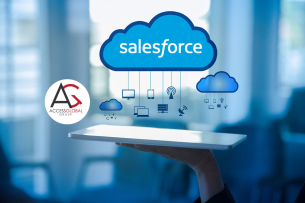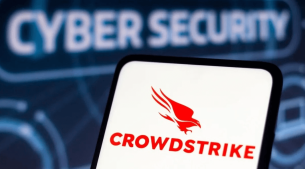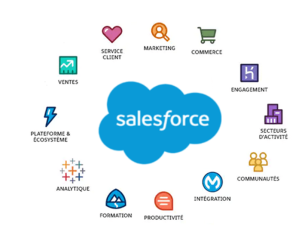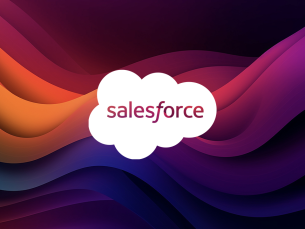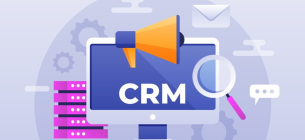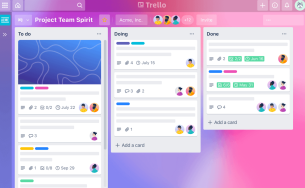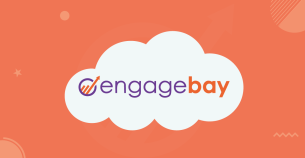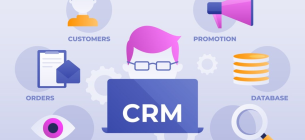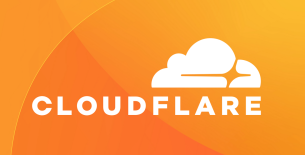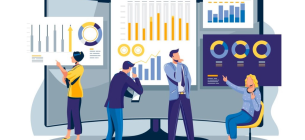In the ever-evolving world of data storage, Backblaze B2 stands out as a game changer. Designed for those who need reliable and cost-effective cloud storage solutions, it has garnered a loyal following among small business owners and IT managers alike. With its straightforward interface and robust features, Backblaze B2 allows users to focus on what truly matters—managing their data efficiently without getting lost in complex pricing structures or hidden fees.
But here’s the catch: understanding the nuances of Backblaze B2 pricing is crucial for optimizing your budget. With a variety of options like pay-as-you-go pricing and various service charges, decoding the costs can feel overwhelming. You might wonder how to best allocate your budget while still securing top-notch backup services that grow alongside your business needs. Fear not; this article will unravel these complexities and provide you with invaluable insights to help you navigate the labyrinth of Backblaze B2's pricing. So, if you're ready to unlock the secrets behind affordable cloud storage solutions, let's dive in!
Understanding Backblaze B2 Pricing Structure
When it comes to cloud storage solutions, understanding the pricing structure is crucial for small business owners and IT managers looking to manage their budgets effectively. Backblaze B2 offers a straightforward pay-as-you-go pricing model that appeals to many users. This means you only pay for what you use, making it an attractive option for businesses that experience fluctuating data needs. Unlike subscription services that require upfront payments regardless of your usage, Backblaze allows you to scale your costs based on how much storage and data transfer you actually use.
Breaking down the specifics, let’s delve into storage costs; Backblaze charges approximately $0.005 per GB stored per month. For instance, if your business has 500 GB of data backed up, you'd be looking at a monthly fee of just $2.50. However, it’s essential not to overlook additional fees associated with downloading your data from the cloud—what are known as egress fees. Each time you access or retrieve this data, you'll incur a cost, currently set at about $0.01 per GB downloaded. If you foresee needing extensive access to your stored files regularly, these fees can add up quickly.
Besides these primary costs, there are sometimes minor service charges depending on unused features or specific retrieval requests could apply as well. It's worth noting that other cloud providers often have more complex pricing models with various tiers and hidden charges—something many users may find confusing and frustrating. By opting for Backblaze B2’s transparent structure, you gain clarity on what you're paying for without unexpected surprises haunting your budget breakdown.
Ultimately, understanding this structure empowers businesses in their decision-making process regarding cloud storage options. It encourages them to accurately assess their actual requirements versus assumed needs while budgeting prudently for both current and future growth trajectories in a digitized world where costs can escalate unless they’re closely monitored.
Key Components of Backblaze B2 Costs
Understanding the key components of Backblaze B2 costs is essential for any small business or IT manager looking to maximize their budget and streamline their cloud storage expenses. The cornerstone of this pricing model lies in its simplicity—Backblaze charges a competitive rate based on the amount of data you store. As of 2023, the cost is approximately $0.005 per GB stored per month. This means that if you have around 1 TB (or 1,000 GB) of data, your monthly storage fee would be roughly $5. This straightforward approach allows businesses to predict their expenses more effectively and avoid unexpected costs that often come with other services laden with complicated tier structures.

However, it’s crucial to dive deeper into egress fees, which are charged when you download data from Backblaze B2 back to your local environment or another service. While storing your files may be affordable, accessing them can add up quickly if not managed carefully. Egress fees are typically set at around $0.01 per GB downloaded. For instance, downloading just 500 GB would incur an additional charge of $5 on top of your storage fees—potentially doubling your expense for that month! Businesses must strategize their retrieval methods and assess how often they will need to access stored data to mitigate these additional charges effectively.
Beyond storage and egress fees, there are also extra features available that can influence overall costs. For example, optional integrations such as API access or enhanced support packages can enhance functionality but also drive up expenses based on your usage level and specific service needs. Organizations should evaluate whether these services align with their operational requirements before opting in; what might seem like a minor addition could significantly impact the overall investment in cloud storage over time.
By keeping these key components in mind—storage costs, egress fees, and optional features—businesses can position themselves better within the realm of cloud storage management and ensure they’re not only storing valuable data securely but doing so in a cost-effective manner as well.
Benefits of Using Backblaze B2 for Small Businesses
When it comes to cloud storage solutions, Backblaze B2 stands out as a cost-effective alternative that many small businesses can benefit from. Traditional storage systems often come with hefty upfront costs and ongoing maintenance fees. In contrast, Backblaze B2 operates on a pay-as-you-go pricing model that allows businesses to only pay for what they use. For instance, a marketing agency storing large amounts of client data could save significantly by using Backblaze, avoiding the burdensome overhead associated with physical hardware while gaining flexibility in their budget.
Moreover, Backblaze B2 offers scalable options that adapt to the growth dynamics of your business. Whether you're a startup just beginning your journey or an expanding enterprise managing more intricate data needs, this platform allows you to adjust your storage requirements seamlessly. A small e-commerce business can start with basic backup services and easily ramp up storage capacity during peak seasons like Black Friday without a hitch. This scalability means that companies can respond swiftly to fluctuations in demand without overcommitting financial resources.
Additionally, robust security measures are integral to the appeal of Backblaze B2 for small businesses concerned about data safety. With features such as end-to-end encryption and compliance with industry standards like GDPR and HIPAA, users can rest assured their critical information is protected against breaches or loss. For example, a healthcare provider leveraging Backblaze benefits not just from reliable storage but also protection against evolving cybersecurity threats—a crucial aspect when handling sensitive patient records.
Ultimately, the combination of affordability, scalability, and strong security makes Backblaze B2 an attractive option for small businesses looking to optimize their cloud storage solutions while maintaining peace of mind regarding their data integrity and safety.
Comparing Backblaze B2 with Competitors
When evaluating cloud storage options, Backblaze B2 stands out in the competitive landscape dominated by heavyweights like AWS and Google Cloud. While these giants offer a multitude of services with impressive scalability, they often come with complex pricing structures that can bewilder new users. In contrast, Backblaze B2 adopts a straightforward, pay-as-you-go pricing model that appeals to small business owners and IT managers looking for affordable solutions without hidden fees. For instance, where AWS charges not only for storage but also varying egress costs depending on data transfer speeds and regions, Backblaze simplifies this by clearly defining its costs per GB stored and incrementally for downloads.
In terms of features, while Backblaze may not boast the extensive tools and integrations offered by Google Cloud’s ecosystem or AWS's wide range of enterprise services, it excels in providing essential backup functionalities that many small businesses require. Users benefit from robust security measures such as encryption at rest and in transit—features equally recognized by its competitors but often buried within more complicated plans that cater to larger enterprises. This means smaller organizations can focus on what matters most: protecting their data without navigating through an overwhelming array of features that they may never use.
However, it's not all sunshine and rainbows when comparing Backblaze to industry titans. Larger companies might find the advanced analytics tools offered by AWS or Google Cloud compelling for intricate operations or massive workloads associated with big data projects. Yet, analyzing user experience points towards favorable reviews for Backblaze's intuitive interface designed specifically for those who may not have extensive technical backgrounds—an appealing factor especially for startups or small teams lacking dedicated IT resources.
Ultimately, choosing between Backblaze B2 and other cloud providers boils down to specific needs and infrastructure strategies. If your priority is simplicity in cost management coupled with reliable data backup solutions tailored to evolving business demands, then Backblaze could be the correct fit. Meanwhile, if you require specialized services like machine learning capabilities or a wider integration list for third-party applications inherent in larger platforms, then exploring beyond would be advisable. Understanding these nuances allows businesses to make informed decisions that align better with their operational goals while keeping budgets in check.
Tips to Optimize Your Backblaze B2 Costs
When it comes to managing your cloud storage expenses with Backblaze B2, there are several strategies that can help you minimize costs while still enjoying the benefits of robust cloud solutions. One significant area for savings is egress fees, which come into play whenever you download data from your storage. Efficient data retrieval practices can go a long way in reducing these charges. For example, if you frequently access specific files or datasets, consider implementing a local caching mechanism that keeps often-used data on-site rather than pulling it from the cloud repeatedly. This not only cuts down on egress fees but also improves overall retrieval times.
Another effective strategy involves leveraging lifecycle rules that enable automated management of old or unused data. By defining policies that automatically transition data to lower-cost storage classes after a certain period—say, moving less active files to cold storage after six months—you can significantly reduce ongoing storage costs. Additionally, these lifecycle rules can also facilitate automatic deletion of truly obsolete data, ensuring you're not paying for unnecessary storage over time while keeping your data management streamlined and efficient.
Using the right storage classes for different types of data usage is equally important for cost optimization. Backblaze offers options tailored to various access needs; for instance, if you have archival data that's seldom accessed, using their B2 Archival Storage solution will be more economical than storing all your files at full price in their standard tier. This tiered approach allows small businesses and IT managers alike to tailor their cloud storage expenditures according to actual usage patterns—a crucial factor in maintaining budget control as your storage needs grow.
By being proactive about how you store and access your files in Backblaze B2, it’s possible to cultivate a cost-effective climate while taking full advantage of what the platform has to offer. Implementing these strategies can lead not only to substantial savings over time but also improved operational efficiency as you adapt your cloud use to fit the unique demands of your business or organization.
Frequently Asked Questions about Backblaze B2 Pricing
As you explore Backblaze B2 for your cloud storage needs, it’s natural to have questions—especially when it comes to costs. Many users share concerns about hidden fees and unexpected charges that can quickly derail budget plans. One common query revolves around egress fees: how they are calculated and why they can sometimes come as a surprise. It's worth noting that while Backblaze B2 has a straightforward pricing model for storage per GB, the cost of data retrieval can add up depending on how often you access your stored information. Given this nuance, businesses should carefully consider their data access patterns to avoid unanticipated expenses.
Another critical area of inquiry involves billing cycles and payment methods. Backblaze operates on a pay-as-you-go basis, which means you'll be charged monthly based on your usage; however, many new users wonder how this translates into their financial planning. It's essential to keep abreast of when fees are incurred and whether periodic discounts or special rates might affect what you see on your bill. For instance, some businesses prefer annual payment options over monthly ones for better cash flow management, effectively helping them predict expenditures with greater accuracy.
Lastly, knowing where to turn for help is invaluable when navigating the intricacies of pricing. Backblaze provides robust support channels for pricing-related inquiries through various mediums such as chat support, email assistance, and comprehensive documentation found in their knowledge base. Should any confusion arise regarding charges or potential pricing scenarios tailored to specific business needs, reaching out directly to customer service can provide clarity and insights tailored just for you. Whether you're a small business owner or an IT manager looking closely at budgeting strategies, having these resources at your fingertips will aid in making well-informed decisions that align with understanding the true costs of utilizing Backblaze B2 services.
Real-Life Case Studies: Savings with Backblaze B2
When it comes to cloud storage, real-world experiences often provide the most compelling insights into how users can benefit from services like Backblaze B2. Take, for instance, a small independent marketing firm that recently transitioned to Backblaze B2 for their data storage needs. Faced with increasing costs from their previous cloud provider, they needed a solution that was both reliable and budget-friendly. By utilizing Backblaze’s straightforward pay-as-you-go pricing model, the firm observed a 50% reduction in its monthly storage expenses. This remarkable turnaround allowed them to repurpose those funds towards expanding their service offerings instead of being bogged down by hefty data management fees.

Similarly, an IT manager at a mid-sized engineering company devised a comprehensive strategy focused on optimizing their use of Backblaze B2 to align with fluctuating project demands. Working closely with his team, he implemented lifecycle rules that automatically archived older files while keeping frequently accessed data readily available—ultimately leading to significant savings in egress fees associated with downloading data. Through careful planning and execution, this manager was able to reduce overall expenditures by nearly 30%, highlighting how strategic utilization of features within Backblaze can optimize costs efficiently without sacrificing performance or accessibility.
Another notable case is that of a small e-commerce business that relied heavily on digital asset storage for product images and videos. They discovered that not only did Backblaze B2 offer lower per-GB rates than other providers, but it also provided unexpected advantages such as unlimited free uploads. By leveraging these advantages and using Backblaze's built-in security features like encryption and redundancy measures, the business found themselves benefiting from enhanced data safety something particularly crucial during peak shopping seasons. These choices ultimately fostered impressive customer trust while ensuring operational continuity and cost-effectiveness.
These examples exemplify just a few ways businesses have successfully navigated the often complex landscape of cloud storage pricing by embracing Backblaze B2’s affordable options. Each success story underscores the importance of understanding individual needs combined with strategic planning to harness the full potential of what cloud solutions can offer—transforming what could be merely operational overhead into a powerful tool propelling future growth.
Conclusion: Making Informed Decisions on Cloud Storage Pricing
Understanding Backblaze B2's pricing structure is vital for small business owners and IT managers alike. By breaking down the costs and being aware of all potential fees, you can make wiser decisions that align with your budget. This knowledge helps you avoid unexpected charges and allows you to optimize your cloud storage expenses effectively.
Before committing to any service, take a moment to evaluate your specific business needs. Consider what data you’ll store, how frequently you'll access it, and the best storage solutions for your goals. With proper planning and insight, you can leverage Backblaze B2's offerings to achieve not only savings but also peace of mind in securing your data.


